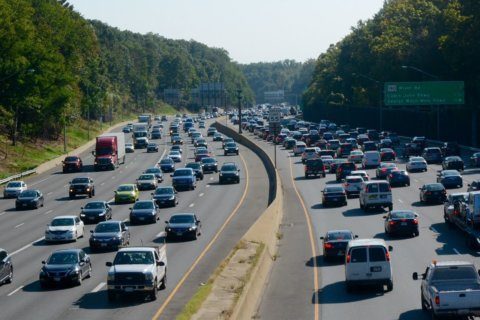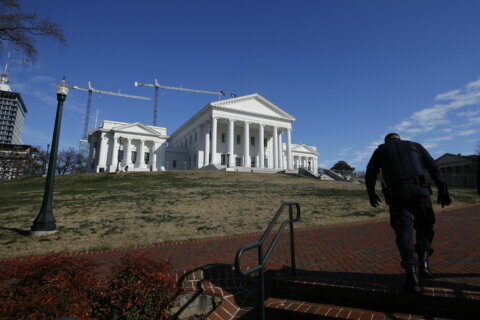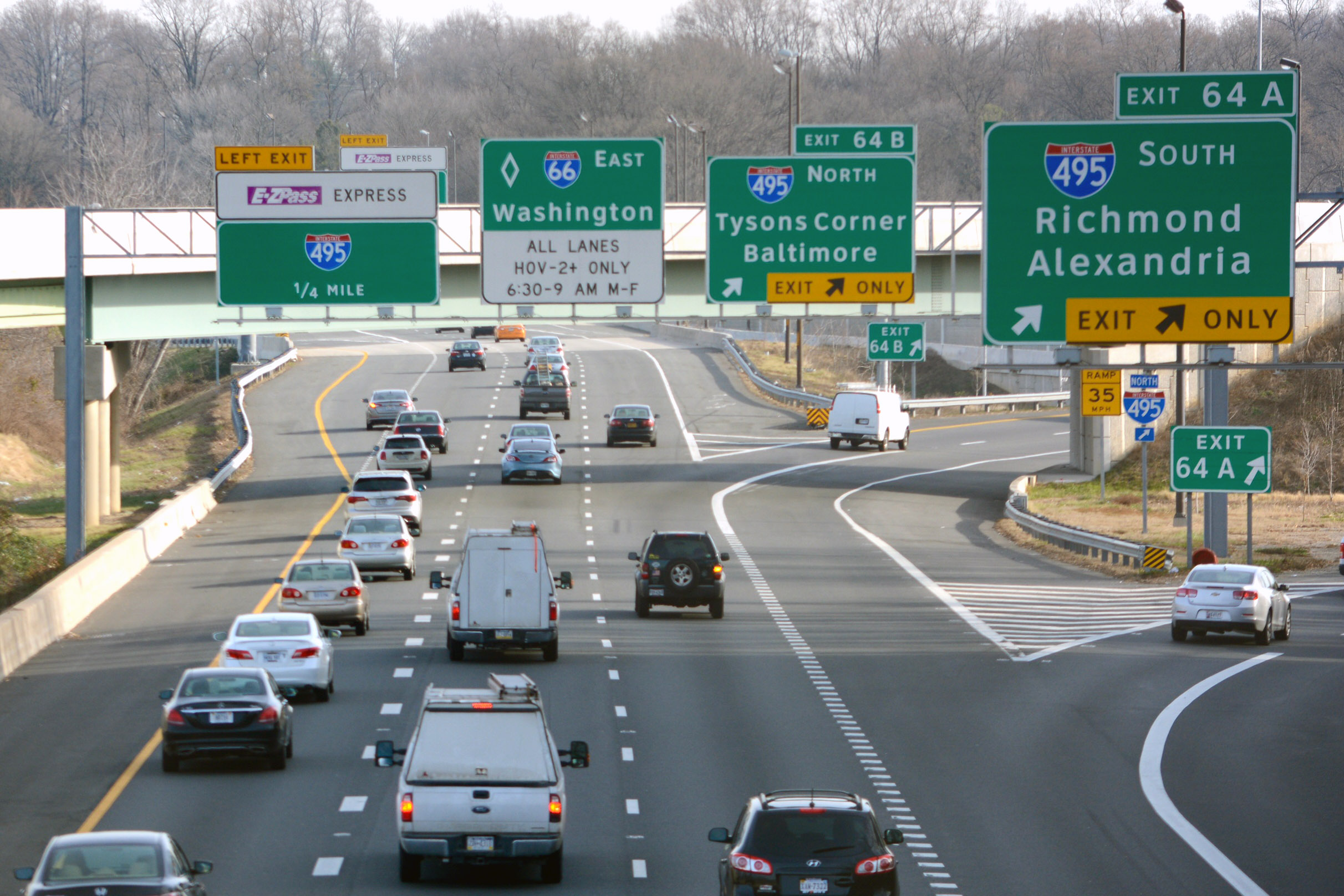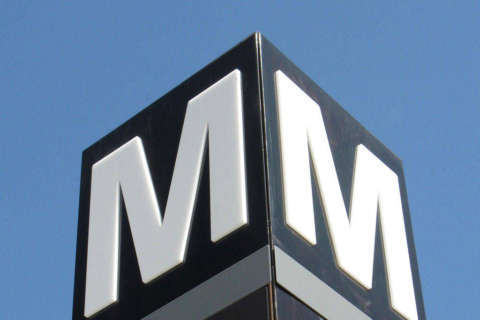Virginia is moving forward with a toll lane extension on the Beltway that will make at least some traffic worse unless a planned widening of the Legion Bridge and toll lanes into Maryland are done by the time the extension opens.
If only the 495 Express Lanes Northern Extension from the current end near the Dulles Toll Road through McLean to the George Washington Memorial Parkway is built, it would significantly worsen traffic in the regular lanes on the Beltway at rush hour in 2025, Virginia Department of Transportation analysis finds.
Only if the toll lanes are further extended over a rebuilt American Legion Bridge into Maryland and up Interstate 270 do traffic projections show broad improvements from the widening work in 2025.
By 2045, projections show many of those benefits could begin to fade as even more cars hit the road in the area.
“Until Maryland finishes its project … we’re making the situation worse for the general purpose lanes on the Beltway. And that’s a problem. A huge problem,” Fairfax County Supervisor John Foust told VDOT representatives last week.
He supports extending the toll lanes through his district into Maryland but wants the projects to be done in sync.
“You can’t get any worse? Well, apparently you can. I mean, it’s hard to imagine, it’s so bad, and you’re making it worse,” Foust said. “Why rush to make things worse?”
The extension is projected to somewhat improve backups on neighborhood streets in McLean by creating more space on the Beltway, which could discourage some drivers from trying to use side streets.
Currently, VDOT Megaprojects Director Susan Shaw expects construction on the 495 Express Lanes extension to the George Washington Parkway to begin as soon as next year. Work would take about three years.
If that happened, there could be up to a two-year gap before Maryland’s construction to widen the Legion Bridge as part of a separate toll lane contract is completed, Shaw said.
“With that said, I think there’s a lot of possibility for some innovation in terms of trying to marry those schedules up as we move forward,” Shaw said.
Maryland’s best case scenario at this point — if there are no more delays or environmental review issues — would be to approve the toll lane contract in May 2021.
The project would then still need to go through the final design and financing process, and construction is expected to take more than three years anyway given the scale of the project.
Maryland’s request for qualifications released last week could give companies like Transurban, the operator of the 95, 395 and 495 Express Lanes, a leg up, since it prioritizes experience on large contracts and with variable price tolling.
Both Virginia and Maryland are now promising a bike and pedestrian path or sidewalk as part of the Legion Bridge widening.
Virginia is also planning a connecting trail between the GW Parkway and Lewinsville Road next to new sound walls going in as part of the toll lane extension.
VDOT’s final environmental assessment for the project is expected to be completed this summer.
Draft conclusions are due to be presented at the next public hearing on the project March 12 at Langley High School.
A separate, more high-level study is considering long-term transit options over the Legion Bridge.
Maryland and Virginia plan to count on using the toll lane expansion to speed up bus trips to make them more viable compared to routes that today would simply sit in traffic, because there are no regular HOV lanes.
Any similar extension of the 495 Express Lanes from Springfield over the Wilson Bridge into Prince George’s County remains many more years away.








